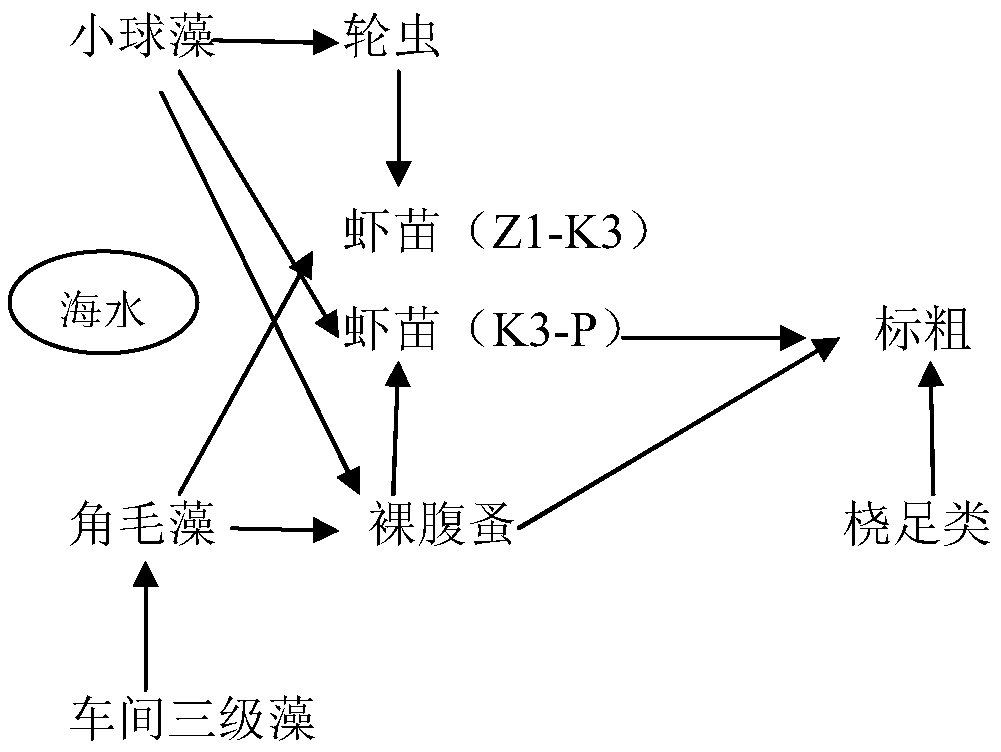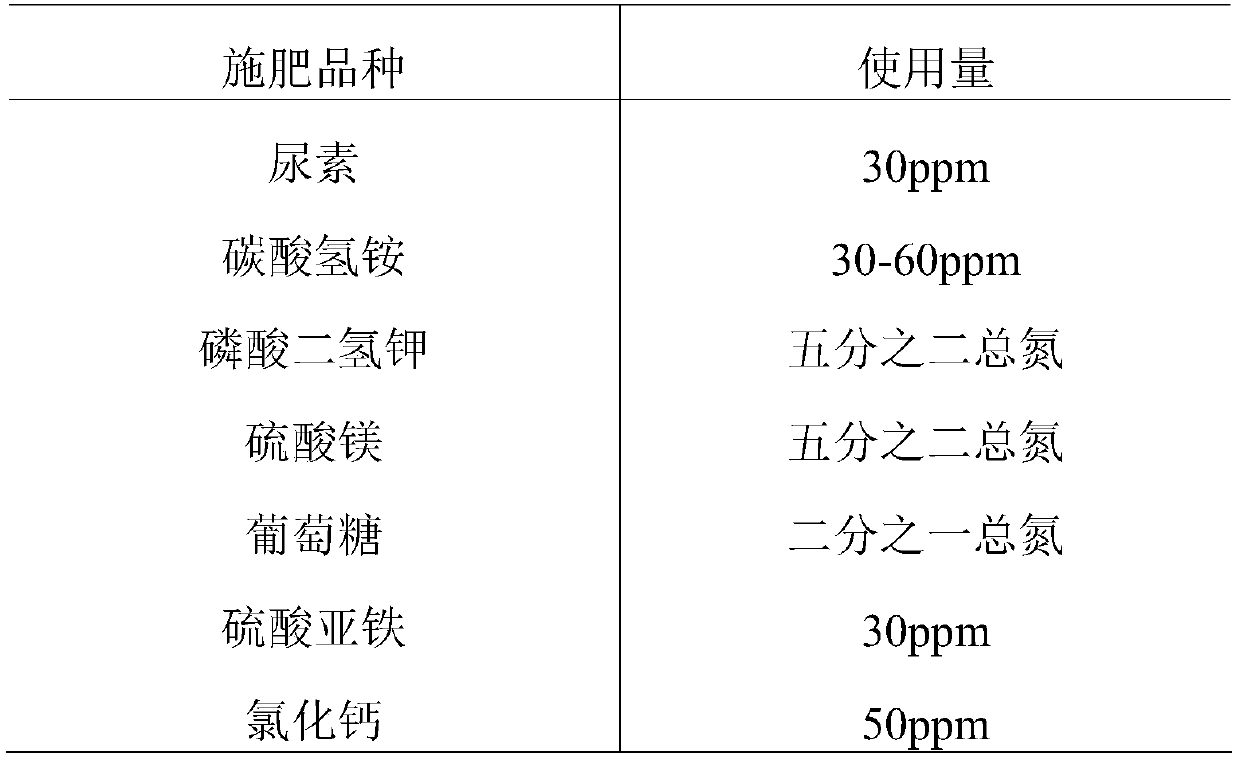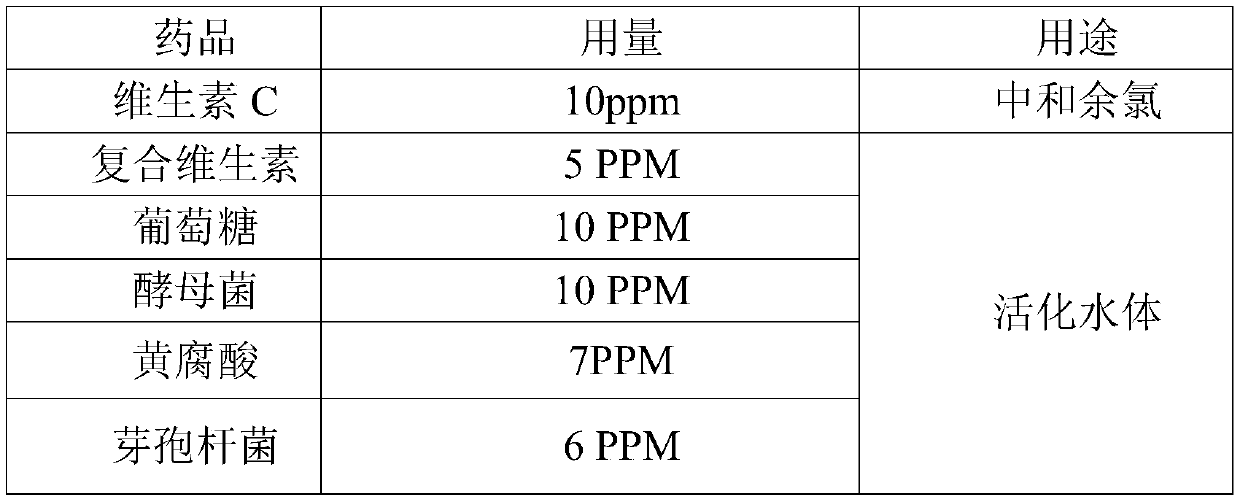A method for ecologically cultivating shrimp seedlings of Penaeus vannamei
A technology of white shrimp and ecological algae cultivation, applied in fish farming, climate change adaptation, animal husbandry, etc., can solve problems such as narrow adaptation to salinity, narrow adaptation to salinity, polluted water, etc., and achieve a wide range of applicable salinity. , The effect of strong water purification ability and complete micro-ecological system
- Summary
- Abstract
- Description
- Claims
- Application Information
AI Technical Summary
Problems solved by technology
Method used
Image
Examples
Embodiment
[0023] The present invention includes an ecological algae cultivation method, an ecological insect cultivation method, and an ecological seedling cultivation method.
[0024] 1. Ecological Algae Cultivation Method
[0025] Ecological algae cultivation technology is a technology for cultivating chlorella using natural pond environment ecology.
[0026] 1. Pond water disinfection: use 25-35ppm bleaching powder to disinfect the seawater used for cultivation, and then adjust the pool water to a salinity of 30‰, and continue disinfection for 20-40 hours.
[0027] 2. Prepare water for inoculation: pump the disinfected pool water to the algae pond for secondary disinfection, use 15ppm bleaching powder, and disinfect for 20 hours
[0028] 3. Work before Chlorella inoculation:
[0029] (1) Microscopic examination is carried out on the algae species to be inoculated, and the chlorella species with excellent shape and full pigment bodies are selected;
[0030] (2) Adjust the salinity ...
PUM
 Login to View More
Login to View More Abstract
Description
Claims
Application Information
 Login to View More
Login to View More - R&D
- Intellectual Property
- Life Sciences
- Materials
- Tech Scout
- Unparalleled Data Quality
- Higher Quality Content
- 60% Fewer Hallucinations
Browse by: Latest US Patents, China's latest patents, Technical Efficacy Thesaurus, Application Domain, Technology Topic, Popular Technical Reports.
© 2025 PatSnap. All rights reserved.Legal|Privacy policy|Modern Slavery Act Transparency Statement|Sitemap|About US| Contact US: help@patsnap.com



